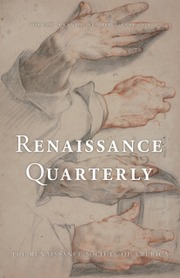A fictive housewife encounters a variety of waste paper in her daily life: a sermon that hints at its potential to become waste, a parchment wrapper made from an old breviary; the grocery wraps pepper with unsold almanacs, and when cooking a pie, she covers its top with an old letter draft to prevent it from burning (190). In the coda of her book, Anna Reynolds imaginatively readdresses the ubiquity of repurposed paper in early modern England, challenging the stereotype that paper was too precious to waste at that time. In the sixteenth and seventeenth centuries, waste paper commonly served as binding materials and wrappers in book trades and everyday life. Early modern people cohabited with these wastes, using tropes like “pepper and mackerel” to refer to repurposed wrappers, and both described and imagined waste paper in literature (54). In material, rhetorical, and figurative senses, they perceived repurposed pages as reflective of time, humanity, the environment, and the world. Reynolds’s monograph delves into these meanings in religious, historical, and literary contexts, illuminating waste paper as a “material emblem” and “concrete metaphor” of the passage of time and the transience of material things (191). By considering materiality and temporality, this book invites further exploration of the narratives and meanings of waste in both the early modern period and our own time.
Reynolds draws upon bibliographical, archival, literary, and visual sources, skillfully interweaving the material and literary history of waste paper. Chapter 1 reveals that binding waste, a form long scrutinized by book historians, is the type of waste most likely to have survived. The broader use of waste paper, such as for wrapping, is showcased through various sources, including dictionaries, Stationers’ Company records, and still-life paintings (24, 30, 45). Chapters 3 and 5 investigate two other types of waste paper: medieval manuscripts and early modern almanacs. Following the dissolution of the monasteries, medieval texts became increasingly susceptible to being repurposed as waste by the mid-sixteenth century (97–98). “Flimsy” and “ephemeral,” almanacs relevant for only one year were rapidly rendered obsolete, making them perhaps the most frequently repurposed paper (157).
This material history underpins cultural and literary examinations of waste paper. Chapter 3’s focus on medieval texts depicts multiple ways in which early modern writers encountered, memorized, and imagined repurposed manuscripts (95, 104). These practices signal the antiquarian and humanistic efforts to “salvage” history from paper waste—“organic” fragments that had begun to decay (105–12). By the late seventeenth century, antiquarians including John Aubrey read waste manuscripts in their world, developing a more self-reflexive approach toward the “temporal continuum” that foreruns present-day rare book collections (114–15). In chapter 5, attention to almanacs highlights the playwright and poet Thomas Middleton, who envisioned an “ecosystem” in which obsolete almanacs symbolize the inevitable breakdown of the human body (27, 187). Middleton reflected upon the writings of Thomas Nashe, as discussed in chapter 4, who viewed repurposed pages as metaphors for moral and religious guidance (154–55). Notably, Nashe used waste paper in his works as a satirical tool to insult Gabriel Harvey and occasionally employed modesty tropes when addressing patrons (124). Chapter 2 foregrounds these rhetorical uses of waste paper in literary texts. The notion that books are not immortal but turn to waste is a commonplace that figuratively disparages rival authors, expresses humility, and flatters patrons (72–83). It also articulates the desires and anxieties surrounding the survival of material and intellectual works over time (25, 93).
This book offers a material and literary history of waste paper, contributing to scholarship on the history of books, paper, discarded objects, and more broadly, material culture. In chapter 2, the author broadens the interdisciplinary scope to encompass Roman tropes of waste paper and classical receptions in early modern England. By exploring the various uses and meanings of waste paper, this monograph not only inspires further research centered on early modern Europe and beyond but also prompts inquiry into the repurposing of paper over time. These new research arenas would shed light on processes beyond literary production and highlight diverse agents parallel to the fictive housewife, complementing the book’s case studies, which primarily focus on English male writers of the sixteenth and seventeenth centuries.


